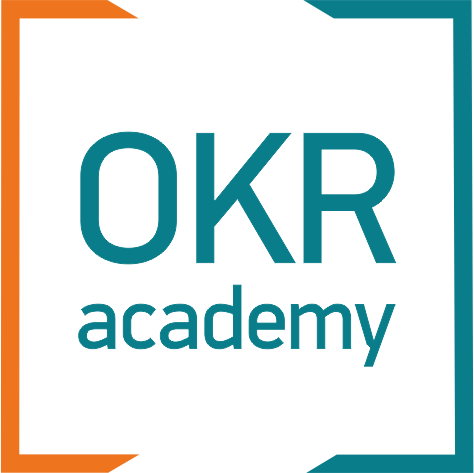How do I explain the difference between OKR and KPI in my training
When it comes to business training, one of the most frequent questions I encounter is how to distinguish between Objective and Key Results (OKR) and Key Performance Indicators (KPI). This article aims to provide a framework for explaining these vital business management tools, focusing on their purpose, historical evolution, and their distinct roles in driving business success
The Dual Pathways of Business Excellence: Stability vs. Strategic Change
At the heart of every thriving enterprise lies a dual strategy: the pursuit of Business as Usual (BAU) for stability and predictability, managed through KPIs, and the embrace of strategic changes that propel the organization closer to its long-term vision. Traditional management methodologies, while effective in overseeing BAU, falter in the realm of strategic innovation—a domain where OKR shines as a beacon for guiding strategic change without restraining the dynamism of the business.
At the heart of every thriving enterprise lies a dual strategy: the pursuit of Business as Usual (BAU) for stability and predictability, managed through KPIs, and the embrace of strategic changes that propel the organization closer to its long-term vision. Traditional management methodologies, while effective in overseeing BAU, falter in the realm of strategic innovation—a domain where OKR shines as a beacon for guiding strategic change without restraining the dynamism of the business.

A Brief Historical Perspective: The Genesis and Evolution of OKR
The genesis of both OKRs and KPIs can be traced back to the pioneering work of Peter Drucker, the father of scientific management, and his concept of management by objectives (MBO). However, it was Andy Grove of Intel who, recognizing the limitations of MBO in the context of a rapidly evolving business environment, began iterating on the concept, eventually giving birth to what we now know as OKRs. This evolution was partly inspired by the recognition of Intel's own Moore's Law, illustrating the exponential pace of change and the necessity for a management framework that could keep up.
As organizations worldwide have sought to refine their strategic management tools, many have inadvertently mirrored Grove's path, evolving their KPI frameworks into something that closely resembles OKRs. This convergence highlights the fluid nature of business management strategies and the ongoing search for methodologies that can accommodate rapid change and innovation.
The genesis of both OKRs and KPIs can be traced back to the pioneering work of Peter Drucker, the father of scientific management, and his concept of management by objectives (MBO). However, it was Andy Grove of Intel who, recognizing the limitations of MBO in the context of a rapidly evolving business environment, began iterating on the concept, eventually giving birth to what we now know as OKRs. This evolution was partly inspired by the recognition of Intel's own Moore's Law, illustrating the exponential pace of change and the necessity for a management framework that could keep up.
As organizations worldwide have sought to refine their strategic management tools, many have inadvertently mirrored Grove's path, evolving their KPI frameworks into something that closely resembles OKRs. This convergence highlights the fluid nature of business management strategies and the ongoing search for methodologies that can accommodate rapid change and innovation.
The Key Differentiators: OKRs vs. KPIs
The essence of OKR and KPI lies in their distinct focuses: OKR is engineered for managing strategic change through short-term, flexible objectives aligned with long-term vision, whereas KPIs anchor the continuity of business operations with predictable, long-range goals.
Several key factors set these two frameworks apart:
The essence of OKR and KPI lies in their distinct focuses: OKR is engineered for managing strategic change through short-term, flexible objectives aligned with long-term vision, whereas KPIs anchor the continuity of business operations with predictable, long-range goals.
Several key factors set these two frameworks apart:
- Planning Period: KPIs, with their focus on the stability of existing operations, lend themselves to long-term planning, often spanning several years. OKRs, on the other hand, are intrinsically linked to the agile management of change, necessitating shorter planning cycles to remain adaptable.
- Corporate Culture: The development of KPIs typically follows a top-down approach, whereas OKRs are established through a collaborative process that involves stakeholders at all levels, fostering a culture of collective ownership and strategic alignment.
- Financial Incentives: Unlike KPIs, which are often directly tied to financial rewards, OKRs prioritize strategic achievements without a direct link to monetary bonuses, thereby encouraging ambitious goal-setting without the fear of financial penalty for falling short.
- Team vs. Individual Focus: KPIs are frequently individualized, whereas OKRs embrace a team-oriented approach, promoting collaboration and shared responsibility in achieving strategic objectives.
Embracing the Complementary Nature of OKRs and KPIs
In conclusion, while OKRs and KPIs serve distinct purposes within an organization, they are not mutually exclusive. KPIs provide the structure needed for the day-to-day operations of a business, offering stability and predictability. OKRs, by contrast, propel an organization forward, driving strategic change and innovation. Understanding and leveraging the strengths of each framework allows businesses to balance operational excellence with strategic agility, ensuring not only survival but thriving growth in today’s fast-paced business environment. By appreciating the nuanced differences and synergies between OKRs and KPIs, leaders can craft a comprehensive approach to management that harnesses the full potential of their organizations.
In conclusion, while OKRs and KPIs serve distinct purposes within an organization, they are not mutually exclusive. KPIs provide the structure needed for the day-to-day operations of a business, offering stability and predictability. OKRs, by contrast, propel an organization forward, driving strategic change and innovation. Understanding and leveraging the strengths of each framework allows businesses to balance operational excellence with strategic agility, ensuring not only survival but thriving growth in today’s fast-paced business environment. By appreciating the nuanced differences and synergies between OKRs and KPIs, leaders can craft a comprehensive approach to management that harnesses the full potential of their organizations.
